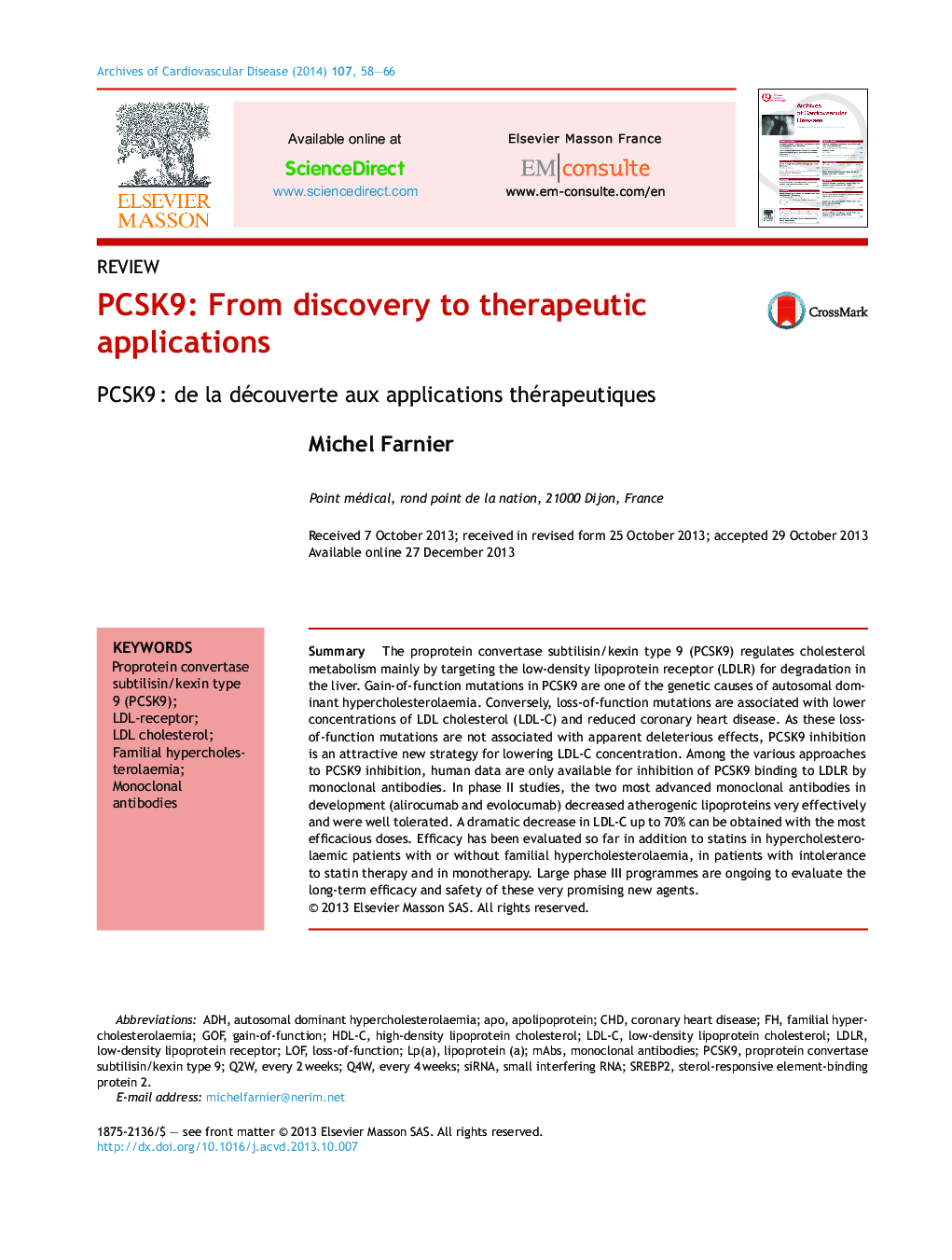| کد مقاله | کد نشریه | سال انتشار | مقاله انگلیسی | نسخه تمام متن |
|---|---|---|---|---|
| 2888897 | 1574358 | 2014 | 9 صفحه PDF | دانلود رایگان |

SummaryThe proprotein convertase subtilisin/kexin type 9 (PCSK9) regulates cholesterol metabolism mainly by targeting the low-density lipoprotein receptor (LDLR) for degradation in the liver. Gain-of-function mutations in PCSK9 are one of the genetic causes of autosomal dominant hypercholesterolaemia. Conversely, loss-of-function mutations are associated with lower concentrations of LDL cholesterol (LDL-C) and reduced coronary heart disease. As these loss-of-function mutations are not associated with apparent deleterious effects, PCSK9 inhibition is an attractive new strategy for lowering LDL-C concentration. Among the various approaches to PCSK9 inhibition, human data are only available for inhibition of PCSK9 binding to LDLR by monoclonal antibodies. In phase II studies, the two most advanced monoclonal antibodies in development (alirocumab and evolocumab) decreased atherogenic lipoproteins very effectively and were well tolerated. A dramatic decrease in LDL-C up to 70% can be obtained with the most efficacious doses. Efficacy has been evaluated so far in addition to statins in hypercholesterolaemic patients with or without familial hypercholesterolaemia, in patients with intolerance to statin therapy and in monotherapy. Large phase III programmes are ongoing to evaluate the long-term efficacy and safety of these very promising new agents.
RésuméPCSK9 ou proprotein convertase subtilisin/kexin type 9 est une protéine clé dans la régulation du métabolisme du cholestérol qui agit principalement en augmentant la dégradation du récepteur des lipoprotéines de basse densité (LDLR) dans le foie. Des mutations « gain-de-fonction » de PCSK9 sont l’une des causes génétiques de l’hypercholestérolémie autosomique dominante. À l’opposé, des mutations « perte-de-fonction » ont été associées avec des taux bas de LDL-cholestérol (LDL-C) et une réduction du risque de maladie coronarienne. Comme ces mutations « perte-de-fonction » n’induisent pas d’effets délétères, l’inhibition de PCSK9 est une nouvelle stratégie intéressante pour abaisser les taux plasmatiques de LDL-C. Parmi les diverses approches pour inhiber PCSK9, des données humaines sont seulement disponibles pour l’instant avec des anticorps monoclonaux qui inhibent la liaison de PCSK9 aux LDLR. Dans les études de phase II, les deux anticorps monoclonaux les plus avancés dans le développement (alirocumab et évolocumab) se sont révélés très efficaces pour diminuer les lipoprotéines athérogènes et ont été bien tolérés. Une diminution majeure du LDL-C jusqu’à 70 % a été observée avec les doses les plus efficaces. L’efficacité a été évaluée jusqu’alors en addition aux statines chez des patients hypercholestérolémiques avec ou sans hypercholestérolémie familiale, chez des patients avec intolérance à un traitement par statine, et en monothérapie. De larges programmes de phase III sont en cours pour évaluer l’efficacité et la sécurité d’emploi à long terme de ces nouveaux agents très prometteurs.
Journal: Archives of Cardiovascular Diseases - Volume 107, Issue 1, January 2014, Pages 58–66